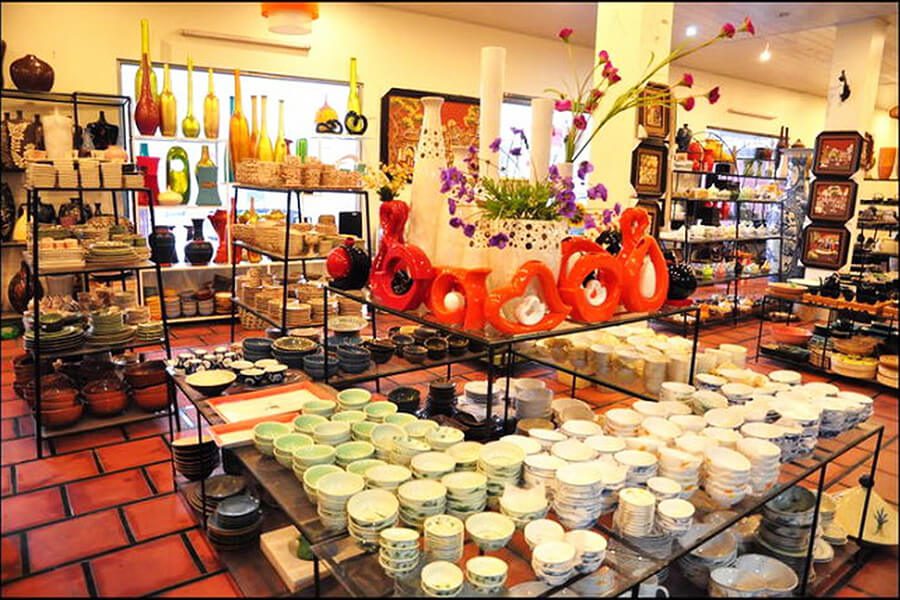Sending Souvenirs by Sea Freight from Vietnam to Australia
Vietnam is a country rich in culture, history, and tradition, making it a popular destination for tourists and expatriates. One of the most cherished aspects of traveling or living in Vietnam is collecting souvenirs — from handwoven textiles and lacquerware to ceramics, bamboo crafts, and specialty teas or coffees. However, once you have accumulated a collection of keepsakes, the question arises: How do you send these souvenirs home to Australia safely and affordably?
While air freight is quick, sea freight is often the preferred method for sending large or heavy packages internationally due to its cost-effectiveness.
In this article, we will explore the complete process of sending souvenirs by sea freight from Vietnam to Australia — including packaging, documentation, customs, shipping providers, estimated costs, and practical tips.

Why Choose Sea Freight for Souvenirs?
Sea freight is ideal for shipments that are not time-sensitive. Compared to air freight, it offers:
Lower cost per kilogram: Especially for bulk items or larger boxes.
Higher weight allowances: Perfect for ceramic vases, wooden sculptures, or metal crafts.
Better suited for large volumes: If you’re relocating or sending gifts to multiple recipients.
Although shipping via sea takes longer (usually 3 to 6 weeks), it provides greater flexibility in terms of volume and cost.
Types of Souvenirs Suitable for Sea Shipping
Not all souvenirs are ideal for international shipping. Consider the following when deciding what to send:
Good options:
Lacquerware and silk products (when packed properly)
Coffee, tea, and packaged dry goods (check for import restrictions)
Wooden carvings and bamboo products
Ceramics, pottery, and stone sculptures
Handmade clothing and textiles
Items to avoid:
Perishable food (unless properly preserved and allowed)
Liquids like fish sauce (can be messy and hard to ship)
Live plants or animal products (often restricted)
Before packing, always check Australia’s import regulations to ensure your items are permitted.
Packing Your Souvenirs for Sea Freight
Proper packing is crucial to protect your items from moisture, shocks, and rough handling during transit. Follow these steps:
Use sturdy boxes: Double-walled corrugated boxes are best for fragile items.
Wrap individually: Use bubble wrap, foam, or newspaper for each item.
Seal well: Use strong tape to secure boxes on all sides.
Label clearly: Include sender and recipient addresses, and mark boxes as “Fragile” if needed.
Consider a wooden crate: For valuable or heavy items, crates offer better protection.
Moisture is a common concern in sea shipping. Add silica gel packs or moisture absorbers to prevent damage from humidity.
Required Documents for Shipping
To ship internationally, you’ll need to prepare basic documents, including:
Packing list: Describes the contents, quantity, and value.
Commercial invoice: Even if you’re not selling items, this helps customs determine the item’s value.
Copy of passport (sometimes required).
Customs declaration forms.
Bill of lading (provided by the shipping company).
Failure to complete the paperwork properly can result in delays or rejection at customs. It’s advisable to consult your shipping provider or a customs broker.

Insurance and Tracking
International shipments by sea can be subject to damage or loss. It’s strongly recommended to:
Purchase shipping insurance, especially for valuable or fragile items.
Request tracking services, if available, to monitor the shipment.
Keep all receipts and documents until the package is received and cleared.
Insurance typically costs 1–3% of the declared value and offers peace of mind.
Tips for a Smooth Shipping Experience
Start early: Sea freight takes time; ship at least 1–2 months in advance.
Use professional packers for fragile or expensive items.
Group items together to save on costs (volume pricing).
Be honest and clear in your declarations to avoid customs issues.
Double-check addresses, especially postal codes in Australia.
Conclusion
Sending souvenirs by sea freight from Vietnam to Australia is a practical and affordable solution, especially when dealing with larger shipments.
With proper preparation — from packing and documentation to choosing the right provider — your Vietnamese treasures can safely reach your home down under.
Whether it’s a hand-painted vase from Bat Trang or a silk scarf from Hoi An, shipping by sea ensures your memories of Vietnam last a lifetime.

